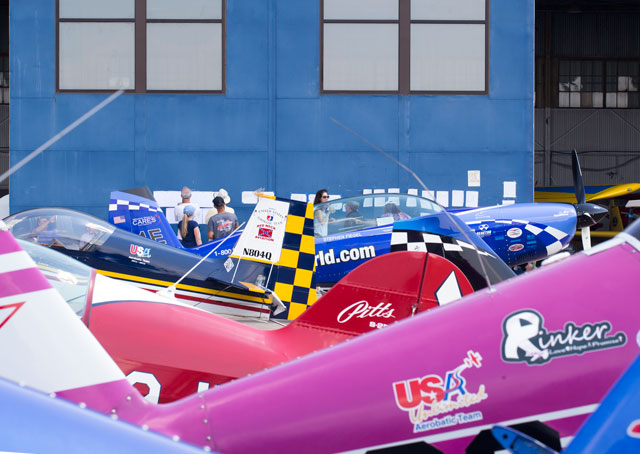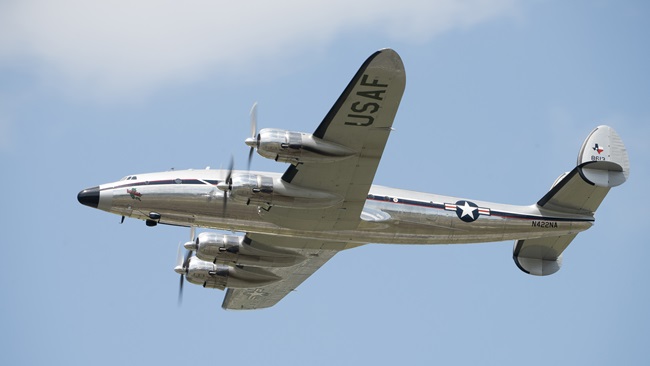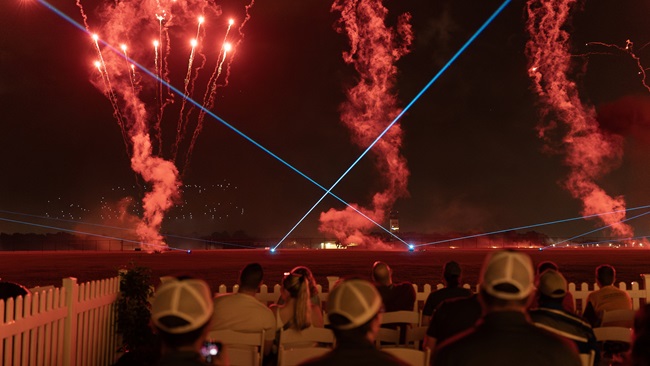Judges trained to pounce on the smallest bobble found little fault in any of Rob Holland’s flights. Doug Sowder, one of the seven International Aerobatic Club national judges training their expert eyes above as the four-time national champion tackled the Free Unknown, uttered words rarely heard on any judging line, sounding nearly chagrined to say them: “Ten point oh.”
This was a sequence concocted from pilot submissions made during the six-day event, a unique concoction of figures flown for the very first time, with no chance to practice. The unknowns are the final and toughest test of skill for those aspiring to a national championship. Sowder found no fault at all in two of Holland’s 14 figures on that flight, and awarded that same perfect score for Holland’s overall presentation. Each lofty number was averaged and adjusted through a scoring system that employs complex statistical analysis in an effort to eliminate the effect of biases and mistakes by judges. The final tally put Holland 697.99 points ahead of second-place finisher Brett Hunter after three flights, the largest point gap between any of the eight pilots who completed all three flights in their quest for the national title in the top category, Unlimited Power.
The last of those flights, on Sept. 25, marked the end of six hard days under a hot Texas sun at the International Aerobatic Club’s 2015 U.S. National Aerobatic Championships. Ninety-nine pilots in five powered and five glider categories participated, a logistical challenge that created long gaps between flights.
With the rest of the competition complete including selection of the Advanced National Team, Holland would deliver a finale, taking another gold medal in the Freestyle completion by echoing his masterful performance in that event at the World Aerobatic Championships a month before, when he captured an unprecedented third consecutive world freestyle title.
“This is what I’ve dedicated my life to, so everything goes into practicing and working hard, just trying to be the best pilot I can be,” Holland said, reflecting on nearly a quarter-century of stick time that began in his teens. “A lot of work over the years has paid off.”
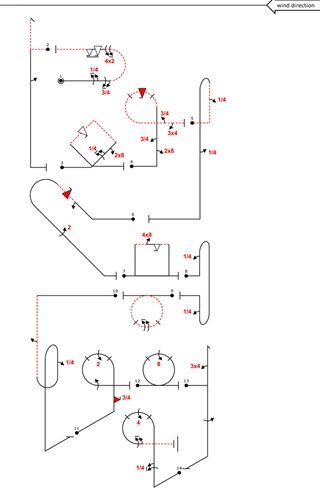
To better understand the challenge Holland and other top-level pilots took on, the Free Unknown is, by design, a sequence of maneuvers that none of the competitors have had a chance to practice. This year’s Unlimited Power (as opposed to glider) Free Unknown began on an upright horizontal line with a one-and-a-quarter roll, followed by a one-and-three-quarters roll in the opposite direction (ending inverted), then a push half-loop up with four half-rolls at the top, each with hesitations at half-roll intervals (announced as “four-of-two” by assistant judges who must be very sharp to keep their mouths moving at contest speed). Then, a one-and-a-half rotation snap roll to exit inverted, downwind. That was the first of 14 figures, and Holland managed an average of 8.71 from the seven judges, adjusted to 8.74 under the FairPlay scoring system. This was the second most difficult figure of the sequence, slightly easier than the push (outside) P-Loop that included a total of four rolling maneuvers on the horizontal and vertical lines, and a negative full snap roll at the top of the loop. Holland would manage an adjusted average score of 8.07 on that one, easily the highest score on that figure among the eight pilots who flew it. (Nine pilots competed in the Unlimited Power category, though one scratched for the final flight.)
The Unknown programs are where championships are won and lost, the toughest test of aerobatic skill in the contest. Holland not only won, he won going away. And then came the smoke and music. The freestyle competition is more like an airshow flight than a traditional competition flight. Judges look for a diverse mix of figures and maneuvers, though pilots are not constrained to the Aresti catalog of international aerobatic competition maneuvers. Unlike the rest of the contest flights, smoke and music contribute to the overall effect, though the same lower limit of 328 feet agl applies, which, for Holland, makes this a very different exercise than an airshow performance.
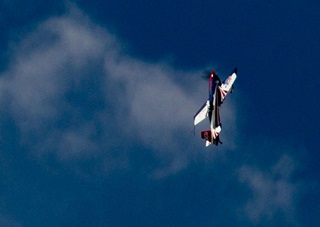
“It’s very different. One, I can’t bring it down to the surface, so not being allowed to use ground effect really affects your energy, so you have to manage your energy a lot more,” Holland said. “You’re allowed to direct energy on the Y axis (toward or away from judges) which you can’t at an airshow. It’s really a different animal altogether.”
Holland collected 90.7 percent of his potential freestyle points, posting another large gap over second place (Kevin Coleman, 84.2 percent).
Holland is the first to win five national titles in a row, and is closing in on the all-time record of seven national titles earned by Leo Loudenslager between 1975 and 1982. Loudenslager, who also won a world championship in 1980, is an IAC Hall of Fame inductee whose Laser 200 is on display at the Smithsonian National Air and Space Museum. Curators likely have their eye on Holland’s MXS-RH already, though we must all hope they have to wait quite a while. He shows no signs of slowing down. Holland was headed to California Sept. 26 for the next airshow, and will compete once again on the world stage in the United Arab Emirates in December: Holland is one of two American pilots chosen for the 2015 Fédération Aéronautique Internationale World Air Games in Dubai.
Holland’s freestyle will count toward the overall championship there, unlike the recent World Aerobatic Championships that treat it as a separate competition.
“It’s always an honor to represent the United States,” Holland said of his upcoming flights in Dubai. “To be able to represent the country I love is just a great thing.”
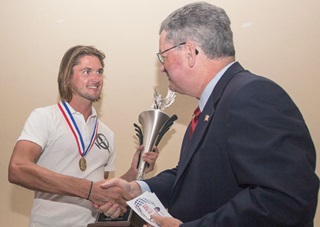
Eric Lentz-Gauthier won the glider championship by more than 300 points over five-time National Champion Jason Stephens (who forgot to fly one of the figures in the glider Unknown and botched another to drop to second place). Lentz-Gauthier, a California pilot who placed fifth in the World Glider Championships in August, made three solid flights and captured the title two months ahead of his own appearance in Dubai. The glider field was considerably smaller than the powered field, a reflection of the challenge and accomplishment of all the three pilots able to compete at the Unlimited level at the U.S. National Championships. (Only a handful of gilders capable of the demanding routines are available in the United States.) Holland had a chance to fly with Stephens ahead of the contest, a favor he would return in the Extra he uses for VIP and media rides after the contest flights concluded in Texas.
“I have a lot of respect for those guys,” Holland said of the glider pilots. “I don’t know how they do it.”
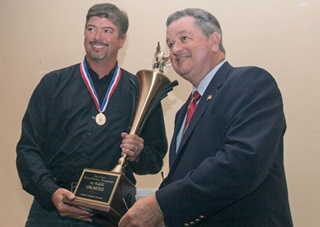
This was a selection year for the U.S. Advanced Aerobatic Team, which will head for Radom, Poland, in 2016 to compete for a world title in this category. Foster Bachschmidt will be the captain, having won the Advanced championship over fellow team members Craig Gifford, Kevin Coleman, Mitch Wild, Steve Johnson, Kelly Adams, Mark Fullerton, and Cameron Jaxheimer. On the glider side of Advanced, Guy Acheson bested Mallory Lynch; they were the only competitors in their category.
Preparing to head to his next airshow in California, Holland closed out an interview by urging the entire pilot community to “fly aerobatics.”
An upcoming story in AOPA Pilot will explore the small world of glider aerobatic competition in detail; Flight Training readers will learn how to get started in aerobatics, and the challenges and rewards that await competitors, even at the lower levels of competition.
